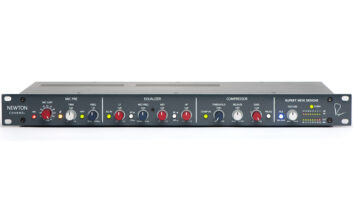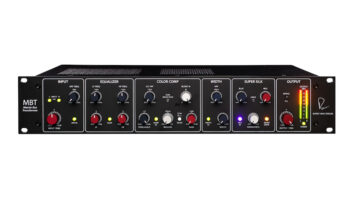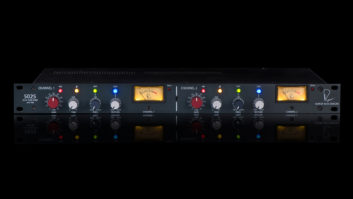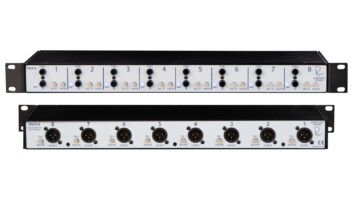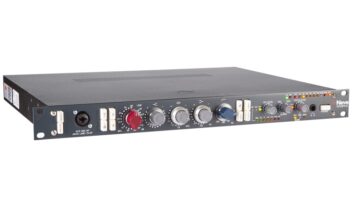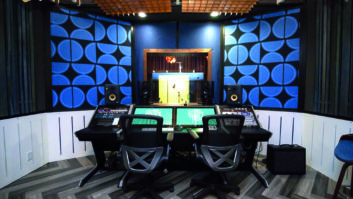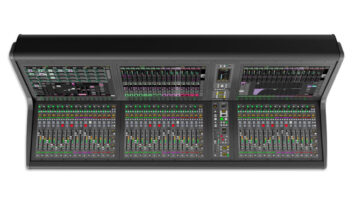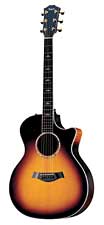

I was walking around the Winter NAMM show a year ago and ran across Rupert Neve. I wondered why this dean of analog electronic design was at an MI show. He told me to come by the Taylor Guitars booth and I’d be in for a treat. He was right.
Dissatisfied with the performance of acoustic guitar electronics, company founder Bob Taylor teamed his pickup designer David Hosler with Rupert Neve to create a system that could reproduce the sound and nuances of an acoustic guitar. After years of research, the result is the Expression System (ES). Exclusive to select Taylor guitars, ES uses two vibrational Dynamic Body Sensors™ and a sub-fretboard Dynamic String Sensor™, the three of which are precisely blended via high-end electronics.
Forget low-fi designs and cheap pots found in typical onboard guitar electronics. The summing circuits for the three individual transducers output to balanced TRS (the guitar ships with a TRS-to-XLR cable for interfacing directly to mic inputs) — no direct box required. To cap off the system, Mr. Neve designed the Taylor K4, an optional outboard preamp/equalizer.
Taylor 614CE
THE GUITARS
The ES is available on Taylor’s steel-string models (300 Series and higher). I reviewed a 614CE, a “Grand Auditorium” with Sitka spruce top and bookmarked flame maple sides and back. The “CE” designation implies a cut-away model with electronics. ES can be retrofit into certain Taylor models; call Taylor for details. The 614CE played perfectly right out of its heavy hard case, with immaculate fit and finish, a full, rich balanced tone and intonation that was spot-on. ES electronics aside, this is an amazing instrument.
The ES design brought new attention to details, such as freedom from the typical drop-in battery holder/electronics module that mounts in a huge hole chopped into the guitar’s side. Instead, the ES has three small knobs (bass/treble/volume) in the side wall near the neck. Beside its elegant look, this approach provides easy access to the detented pots, where “flat” is at the 12 o’clock position. Near the tailpiece is a holder for two AA cells and the TRS output/strap pin. The unit powers up when a cable is inserted; battery life’s about 20 hours. The output is balanced but also works with an unbalanced cable for connecting to a standard guitar amp, effects box or tuner.
One question that everybody seems to ask is whether users can tweak the individual levels of the three transducers — and the answer is no. But for anyone used to working with piezo or standard magnetic pickups on acoustic guitars, hearing the ES is a major shock. For the first time from a pickup, I heard a natural, uncolored sound that required little tonal tweaking. This is miles removed for the surgical, radical EQ needed on a standard pickup to make it sound even vaguely natural. The guitar’s onboard EQ is sweet and gentle — just what you’d expect from a Rupert Neve design. And whether playing in a festival or coffeehouse venue — I used it in both — the system simply wouldn’t feedback, even in high-SPL situations. Another point worth noting is the amazing amount of headroom the ES electronics offer, offering clean reproduction at any playing level from subtle harmonics to heavy slammed chording. Yeah!
Taylor K4
ENTER THE K4
Designed for studio or live use, the optional ($898) Taylor K4 is an outboard preamp/EQ for acoustic guitar that features low-impedance, transformer-coupled balanced XLR I/O, bass and treble controls, a true parametric midrange with adjustable Q, a pre/post-EQ effects loop, polarity reverse switch, headphone jack with level control, mute and a dedicated tuner output. An internal (nonswitchable) -18dB/octave highpass filter removes rumble and LF crud below 30 Hz. The K4 is powered by an external wall wart and for convenience — say, for those times when you forget the power supply — can be powered by two “C” batteries. In the studio, I’d prefer a standard 1U rack package to the K4’s stand-alone milled-aluminium chassis, and by removing the battery compartment, there’d be room on an internal power supply. As a plus, the unit doubles as a nice little studio preamp when used with (non-phantom — powered) dynamic or ribbon mics. You can also patch into the loop return jack and use the EQ alone to tweak any line-level source.
In the studio, the K4 is plug-and-go: The EQ is smooth and musical, whether using the shelving LF (450 Hz) and HF (1.6 kHz) or the parametric MF band. Calling the latter a “mid” band is somewhat misleading, as it has an extremely wide, 80 to 8,000Hz range. With a touch of EQ, the ES truly rivals a well-miked acoustic guitar setup. I particularly liked the convenience of overdubbing acoustic guitar parts in the control room — something I would have never attempted before the ES system.
Taylor’s Expression System applies a high-quality, high-tech approach to the old problem of guitar transducers, with impressive results. Hear it for yourself at AES, booth 105.
Taylor Guitars, 619/258-1207, www.taylorguitars.com.

Click here to view on online presentation of Taylor’s Neve Expression system.
